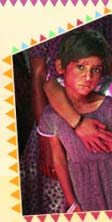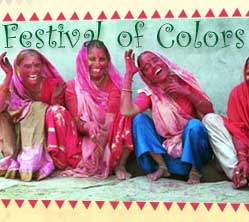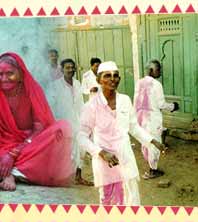There are stories about Krishna spraying colors on
Radha and other Gopikas and smearing their faces with 'Gulal' suggesting
that Holi is older than the birth of these deities. In Bengal and
Orissa, Holi is also celebrated as the birthday of Shri Chaitanya
Mahaprabhu, the famous saint-poet. One of the oldest festivals of India,
there have been evidences which suggests that Holi was being celebrated
here as a festival since several centuries before Christ. Jamini has
mentioned such a festival in his religious works known as 'Purvamimamsa
Sutras' and 'Kathaka Grhya Sutra'. The paintings and murals on the walls
of the ancient temples have captured the scenes of Holi, either based on
Radha and Krishna or the royalty.
The 16th century panel found in a temple at Hampi belonging to the days
when it was the capital of Vijaynagar Empire showcases beautiful
sculptures of Holi in which a royal couple is shown being drenched by
the surrounding maids who are sprinkling colored water on them by bamboo
syringes known as 'pichkaris'. Other similar paintings include the 16th
century painting of Ahmednagar depicting the theme of Vasanta Ragini or
'Spring Music' where the royal couple is depicted sitting on a grand
swing while maidens play music and spray colors on them; the painting of
Mewar (circa 1755), which shows the court of Maharana, who is bestowing
gifts to people on Holi and is enjoying dance performances; and a
miniature painting of Bundi depicting the procession of the king, seated
on an elephant, and damsels showering 'gulal' on him from their
balconies.









